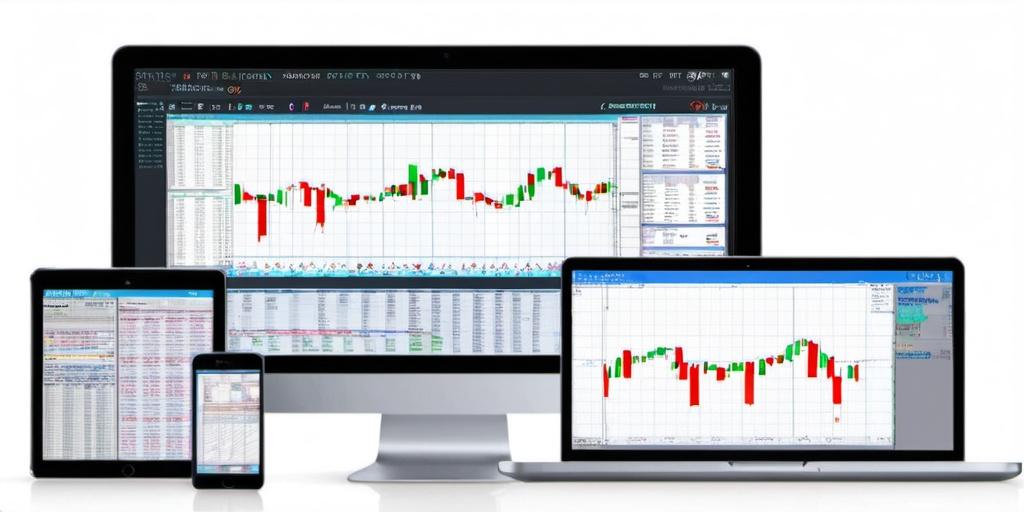Learn more about Analytic software

Understanding Trading Software
Trading software has become a crucial tool for anyone involved in the financial market. It isn’t just about monitoring stocks; it’s more like your trusty second-in-command when you’re in the wild west of trading. This software provides you with real-time data, analytical tools, and the ability to execute trades with a click—or, in some cases, automatically based on set criteria.
Now, picture you’re the captain of a ship. Trading software is your first mate, keeping an eye on the horizon for opportunities and risks. It’s not magic, but it’s pretty darn close. The good news is you don’t need to be a computer whiz to use these systems. You just need to know the basics and a few insider tricks.
Types of Trading Software
While the options might be plentiful, they boil down to two main types: desktop-based and web-based platforms.
Desktop-based platforms often come with a hefty amount of features, letting you modify and tweak them to your preferences. It’s like having a custom-built workshop at home. These desktop juggernauts are usually preferred by professional traders or those who spend a lot of time trading every day.
Web-based platforms, on the flip side, are your go-to for ease and accessibility. You can access these from anywhere, as long as you have an internet connection. Think of them as your portable toolbox. They might not have all the bells and whistles of their desktop cousins, but they get the job done without tying you to a single location.
Features to Look For
Before you hit the “download” button, consider what’s in your trading software wish list. There’s no one-size-fits-all here, but some features are pretty much non-negotiable.
- Real-time Data: You want your data hot and fresh. Real-time updates allow you to react to market changes as they happen.
- Analytical Tools: Charting capabilities, technical indicators, and backtesting features help you strategize. Think of these as your magnifying glass and detective kit, unraveling patterns and trends.
- User Interface: It’s gotta be user-friendly. You don’t want to need a manual every time you log in.
- Security: This is a big deal. Your money and data need to be secure. Look for software that takes encryption seriously.
- Customer Support: Nobody wants to be stuck on hold for hours. Good software comes with responsive support teams.
Algorithmic Trading
Algorithmic trading, or “algo-trading” if you’re in the know, is like the autopilot mode for your trading endeavors. It’s where you set the parameters, and the software takes over, executing trades when your conditions are met. This system doesn’t sleep, doesn’t panic, and doesn’t order late-night pizza, which is ideal during market fluctuations.
Consider algorithmic trading if you’re someone who’s comfortable with not having your fingers on the pulse at all times. It requires a solid understanding of trading strategies and an ability to trust the software with your financial decisions.
Customizability vs. Simplicity
Some folks want their trading software akin to a tricked-out sports car—loads of features, customization options, and perhaps a bit of chrome. Others prefer a simpler, more streamlined interface that’s less about flair and more about efficiency.
Look, both have their merits. Advanced traders might enjoy tinkering with every setting imaginable, while newbies or those who don’t live and breathe trading might lean towards something that’s plug-and-play.
Costs and Subscriptions
Money matters. Trading software can be a hefty investment, especially if it comes with subscription fees. Free versions exist, but they usually come with limitations. Premium options provide more features, but they can set you back a pretty penny.
Here’s a thought: decide on a budget, then weigh what you get for the price. Some platforms might offer a month or so free trial. Use that time to see if it’s a love match or just a brief fling.
Personal Experience
Let me toss in a quick story. I once tried a fancy algorithmic software, thinking it would do all the heavy lifting. It was like relying on a GPS in a foreign city. The software was excellent but took time to set up and understand. After a few errors (like buying an obscure stock by mistake), I realized the importance of reading the manual, or at least doing a little research.
Final Thoughts
Trading software is your essential companion in the trading market. It’s no silver bullet, but it’s your best shot at staying ahead in this fast-paced environment. With the right features, a balance between simplicity and customizability, and a reasonable cost structure, you’ll be on your way to making your trading activities more efficient and potentially more profitable. Just remember—it’s a tool. You’re the boss.